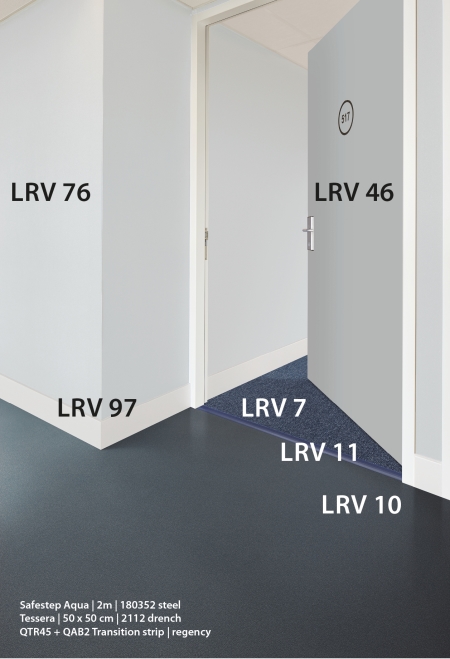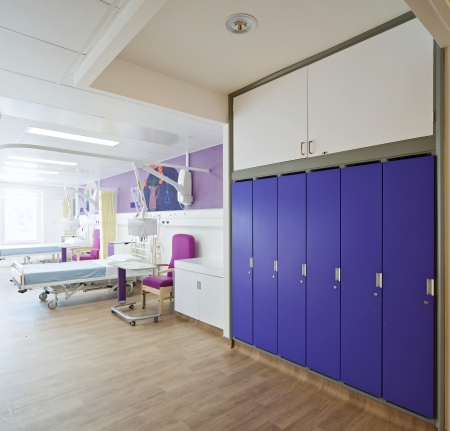As age-related changes and impairments can often make it more difficult for people to comprehend and navigate a building, it is vital that designers and specifiers understand how to create an appropriately-designed healthcare environment. Here, Julie Dempster, marketing manager at Forbo Flooring Systems, discusses the main design principles for flooring specification
Impairments such as sensory, mobility or cognitive, or sometimes a combination of all three, can have a serious impact on older people and those with dementia.
Functioning, behaviour, independence and, ultimately, quality of life can all be compromised, but appropriately-designed environments can help to keep them safe from dangers, such as falls.
Indeed, by understanding the impact of such impairments, designers, specifiers and carers can create interiors that help people feel safer and more confident in their surroundings.
One of the most-important factors that needs to be considered when designing dementia-inclusive interiors is contrast.
Contrast can be used to help people with sight loss and dementia to identify key features and rooms. Good use of contrast can also facilitate independent living, for example by supporting people to find their way around a space and to use certain fixtures.
One of the key ways to incorporate contrast within a building is through the flooring specification.
As with every building, when we walk through an area we will subconsciously notice the flooring. In fact, thoughtfully-designed flooring can play a huge role in supporting way finding around unfamiliar premises and can also be used to define various areas and spaces.
However, there are a number of guidelines that need to be followed to ensure the flooring you have specified for a dementia-friendly interior is suitable.

It is recommended that a difference of 30 degrees of Light Reflectance Values (LRV) is achieved between surfaces
Firstly, it is recommended that a difference of 30 degrees of Light Reflectance Values (LRV) is achieved between surfaces; the floors to walls and doors to walls. If this is not possible, then it is essential that optimum contrast is achieved between the two critical planes such as the floor and wall.
The adjoining flooring must be tonally similar to reduce the risk of falls, which means the flooring LRVs should be within eight degrees of each other, although less is better.
Thoughtfully-designed flooring can play a huge role in supporting way finding around unfamiliar premises and can also be used to define various areas and spaces
Transition strips should match the tones of both flooring surfaces, with an ideal difference of no more than three degrees of LRV. If the contrast between the floor coverings is too great and the transition strip contrasts too much – or if it is a highly-reflective trim –this could be perceived as a step and result in high-stepping and potential falls, or even deter people from passing through.
When it comes to the actual design of the floor coverings, it is vital that a glossy or sparkly floor is avoided as it could be perceived as a wet surface. Flecked flooring could also convey spots, while logos etched into the floor could be observed as an obstacle. As such, a matt finish with a simple, plain design is preferred.
Forbo has worked with the Dementia Services Development Centre (DSDC) at the University of Stirling for the past year to review and rate its floors in relation to dementia design principles and usability within a dementia-inclusive environment.
For ease of identification, the suitability of a product is classified by a number with corresponding explanation of use, within the key ratings provided.
The DSDC-accredited product logo is awarded on the merit of the individual product plus colourway and does not merit the final application.Now, specifiers and designers can choose from an extensive selection of more than 800 Forbo products that have been accredited across the Class 1a, 1b and 2 rating system. This rating system is based on the tonal contrast and pattern of products, which determines their suitability for use.
In addition to the design and contrast of the flooring, other factors that should be considered is the ease of maintenance, infection control and acoustics – all of which will also contribute significantly to the end performance of the interior.

Forbo has worked with the Dementia Services Development Centre (DSDC) at the University of Stirling to review and rate its floors in relation to dementia design principles
